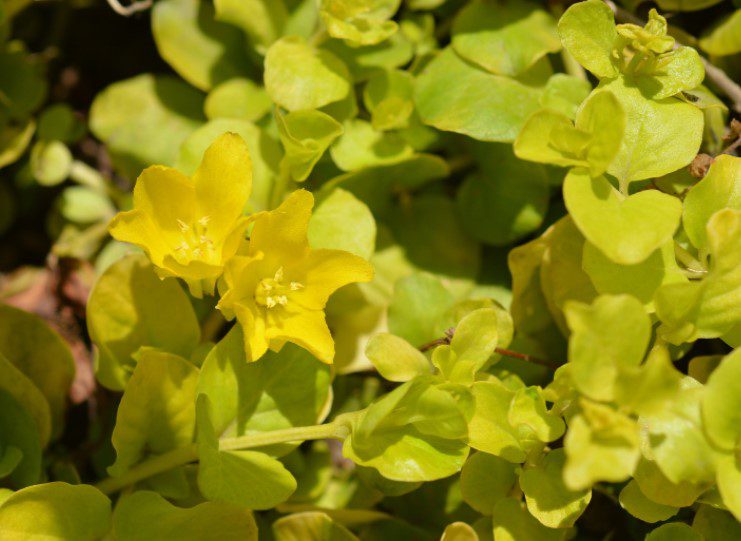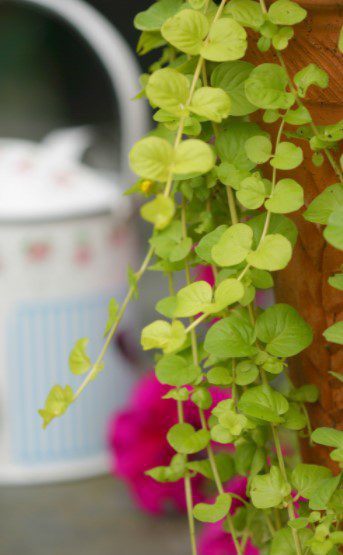Creeping Jenny
SPECIES: Lysimachia (li-si-ma’ki-a) nummularia (num-u-le’ri-a). An English native that has wandered in and out of British gardens for centuries. Its many common names: twopenny grass, twopence, wandering Sally, wandering Jenny, creeping Charlie, and moneywort.
Creeping Jenny propagates itself by above-round runners, therefore the many wandering-type names. The other names – including nummularia from Latin nummus, meaning “coin” – refer to the coin-shaped foliage.
A tea made from Creeping Jenny was used for whooping cough, known in the 16th century as the “chinne cough” in children.
DESCRIPTION: Low, creeping plant, not over 6 inches tall, roots at the nodes of long, wandering stems. In May-June, it bears many yellow, cup-shaped flowers among small round leaves. The common variety, Aurea, features yellow variegated leaves.
CULTURE: Likes sun or shade. In wild, found in damp woodlands or along banks of streams and ponds. Will adapt quickly to dry garden soil. Once established, CJ covers a large area. Cold hardy zones 4-9.
USES: Good ground cover for banks or trailing along rock walls. A perfect plant for hanging baskets, window boxes, and container bouquets. Looks nice with the planting of sedums.
How to Grow Creeping Jenny
It is easy to grow it. To ensure that creeping jenny isn’t restricted in your area because it is invasive, consult your local extension office. Creeping jenny can thrive in either full sun or partial shade.
Plants can be purchased from nurseries in spring. Choose a well-drained location. These plants should be spaced 2 feet apart (.6 m.).
They grow quickly to fill in any gaps. If you don’t have the ability to manage its rapid spread, do not plant it.
Caring for Creeping Jenny
Ground Cover After it is established, the plants require very little maintenance. Gardeners tend to prune this fast-growing plant to control its horizontal growth.
For better air circulation and to reduce spreading in the spring, you can divide the plant.
This plant needs regular water and can be helped by a little organic fertilizer once it is planted. To retain moisture, mulch or compost can be applied around plants.
Is there a difference between Creeping Charlie & Creeping Jenny?
People mistakenly believe that creeping jenny is the same as creeping Charlie when they grow creeping jenny plants.
While they look similar, creeping Charlie can be a low-growing weed and invades gardens. On the other hand, Creeping Jenny is a groundcover plant that is often a welcome addition in gardens or landscapes.
The stems of the creeping Charlie can grow to a length of up to 30 inches (76.2cm). This invasive weed forms nodes at the junction of the leaves and stems.
Creeping Charlie also produces lavender flowers at 2-inch (5 cm) height. The spikes. The majority of creeping jennies reach maturity at 15 inches (38 cm).
With yellow-green, coin-like leaves that turn bronze in winter and inconspicuous flowers in early summer.
Final Word
Creeping Jenny makes a great ground cover. It can be tucked under many perennial plants, so it almost eliminates the need to weed.
Creeping Jenny can be found in either shade or part shade. It has small, elongated leaves that range from bright chartreuse to pale yellow.
It can spread quickly in all directions, so make sure you have the right spot for it.




























